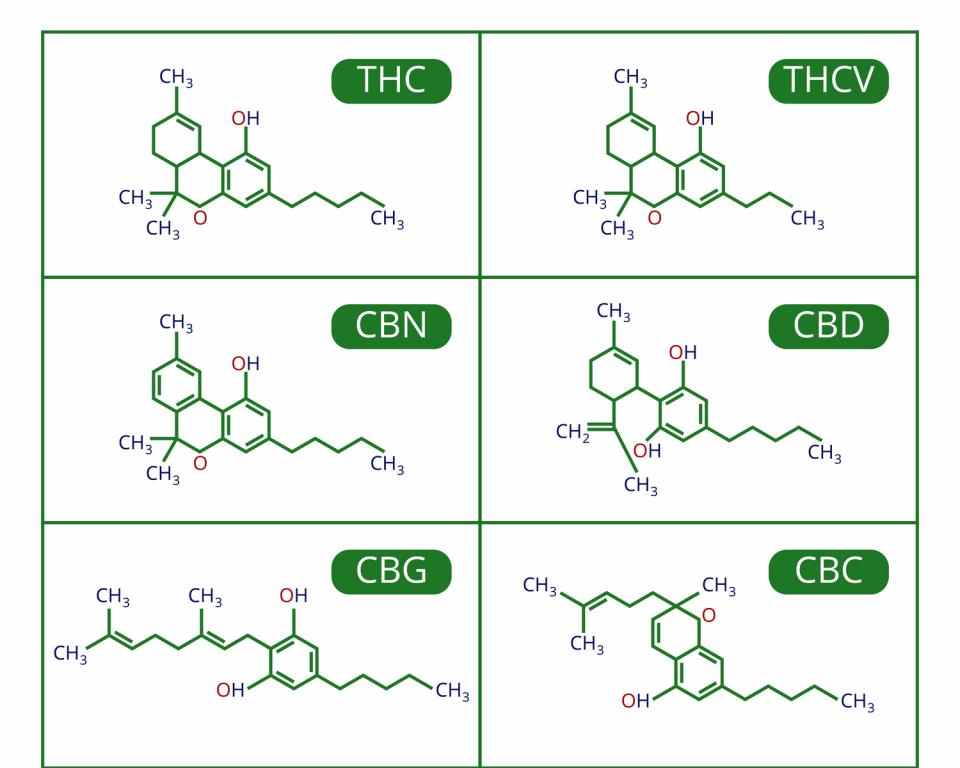Most cannabis consumers are familiar with the activated cannabinoids obtained after decarb. However, the rapidly changing cannabis industry has led many experts in the field to conclude that consuming acidic cannabinoids can also be very interesting.

What are acidic cannabinoids?
They are ordinary cannabinoids that haven't been through a chemical reaction called decarboxylation or activation consisting in heating raw cannabis in an oven for about 30-60 minutes at a temperature of 212°F and 248°F.
The longer they are heated, the stronger the activation of the phytocannabinoids will be. The psychoactive effect will, therefore, become more potent as a result of the transformation process (from THC (C21H30O2) into THC) as well as for the synergy among the different cannabinoids.
The cannabinoids found in the trichomes of raw cannabis have a carboxyl group (COOH) attached to them. By applying heat, this group is released, meaning cannabinoids become active and so do their many and famous effects.
With all this, we can conclude that acidic cannabinoids don't have any psychoactive effects.
Advantages of acidic cannabinoids

All the cannabinoids in cannabis plants play a major role in the life of those who wish to make a therapeutic use of them or simply aren't interested in going through a psychoactive high.
Benefits of the most important acidic cannabinoids:
- THCA (Δ9- Tetrahydrocannabinolic acid) is the acidic form of THC (Δ9-tetrahydrocannabinol) with powerful anti-inflammatory properties that effectively treat arthritis and lupus. Studies indicate that it also has neuroprotective properties that highly benefit people suffering from Alzheimer or Parkinson, as well as anti-emetic properties that are helpful in fighting nausea, boosting the appetite and even combating anorexia. It is said to halt the proliferation of cancer cells as well. But the benefits don't end there. It improves quality of sleep and relieves muscle tension and pain. This cannabinoid will surely play a key role in the future.
- CBDA (Cannabidiolic acid) is the acidic form of CBD (cannabidiol) and has a number of properties that help stop the development of cancer cells and tumors, particularly of the ones located around the breast region. Cancer cells undergo a gradual process of self-destruction known as apoptosis.
- CBCA (Cannabichromenenic acid) is the acidic form of cannabichromene (CBC), and it seems to have antifungal and anti-inflammatory properties, according to several research studies carried out worldwide.
- CBGA (Cannabigerolic acid) is the acidic form of cannabigerol (CBG) with very effective analgesic and anti-inflammatory properties.
- CBNA (Cannabinolic acid) is the acidic form of cannabinol (CBN), and CBLA (Cannabicyclolic acid) is the acidic form of cannabicyclol, both of them with anti-inflammatory properties.
We have preferred to be cautious and so we've only mentioned the properties supported by scientific evidence, the ones which have been demonstrated in official research studies carried out by medical cannabis experts within a legal framework. We're certain that all these studies will lead to significant scientific developments culminating in the creation of remedies for treating many of the diseases affecting human beings.
How to use acidic phytocannabinoids
As a rule of thumb, those who wish to consume acidic cannabinoids prepare cannabis juices with fresh cannabis leaves or flowers. Cold-pressed juices are the best way to make the most of the phytocannabinoids. We recommend using a cold press juicer.
Mix cannabis juice with fruit or vegetable juice, depending on your personal preferences, to reduce the bitterness of weed. This way, we'll significantly improve the flavor, and we'll be able to really enjoy all the properties and the juice.
We hope this post shows you a new way to enjoy our favorite plant!





Give us your feedback
Your rating (between 1 and 5)
1 2 3 4 5Leave a comment
Read comments in other languages